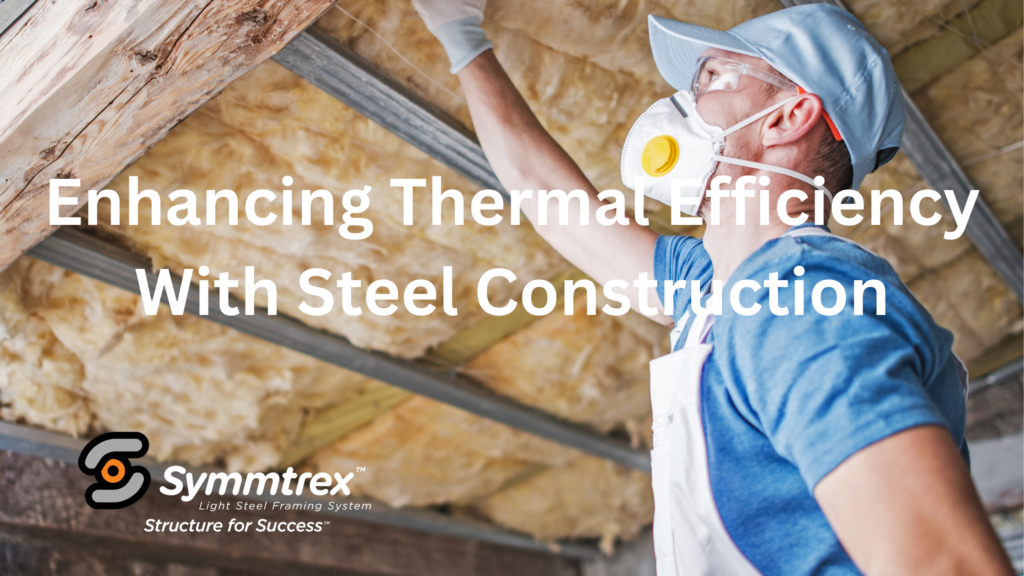
In the construction industry, there’s a growing trend towards more sustainable and efficient building materials. Yet, many professionals are hesitant to switch from traditional timber framing to light steel framing (LSF) due to concerns about thermal conductivity and efficiency. In this post, we’ll demystify these concerns, provide examples of proper insulation, and explore advanced design strategies that effectively minimize thermal bridging.
Understanding Thermal Conductivity in Light Steel Framing
Thermal conductivity refers to the rate at which heat passes through a material. While it’s true that steel has higher thermal conductivity than timber, this doesn’t automatically translate to less energy-efficient buildings.
Factors Impacting Thermal Efficiency in LSF Buildings
- Insulation: Proper insulation is key to enhancing thermal efficiency. With adequate insulation, LSF buildings can easily match or surpass the thermal performance of wood-framed structures.
- Thermal Bridging: This occurs when heat flows across an element more conductive than the surrounding materials, like a steel stud in a wall. However, advanced design strategies can effectively minimize thermal bridging, improving the overall thermal efficiency.
Enhancing Thermal Efficiency: Symmtrex’s Approach
Symmtrex uses a multipronged approach to tackle the challenge of thermal efficiency in LSF buildings.
Examples of Proper Insulation
Several types of insulation can enhance thermal efficiency in LSF buildings12. For instance:
- Cellulose, Fiberglass, and Rock Wool: These materials are typically blown in by experienced installers skilled at achieving the correct density and R-values, enhancing thermal resistance properties.
- Polystyrene Beads and Foam Insulation: These provide a continuous barrier against heat transfer, offering easy installation and excellent thermal resistance properties.
- Aerogels: These are good thermal insulators because they almost nullify two of the three methods of heat transfer – convection and conduction3.
Advanced Design Strategies
- Breaks in Continuity: Creating breaks in steel continuity can reduce thermal bridging, improving thermal performance1.
- Exterior Insulation: Applying insulation on the exterior of the steel frame reduces thermal bridging and improves overall thermal efficiency1.
Other Advanced Construction Techniques
- Thermal Spacer Blocks: These are used between the exterior cladding and the steel studs to reduce thermal bridging1.
- Energy-Efficient Windows and Doors: These further enhance the thermal efficiency of our LSF buildings1.
- Low-Thermal Conductivity Materials: Using insulating materials with low-thermal conductivity that divide an air space into very small pockets can minimize solid and gas conduction4.
In conclusion, while steel does have higher thermal conductivity than timber, innovative design strategies, high-quality insulation materials, and advanced construction techniques can effectively address this challenge. Symmtrex is committed to delivering LSF buildings that offer superior thermal efficiency without compromising on speed, durability, or sustainability. Let’s embrace the future of construction with Symmtrex’s Light Steel Framing system.

